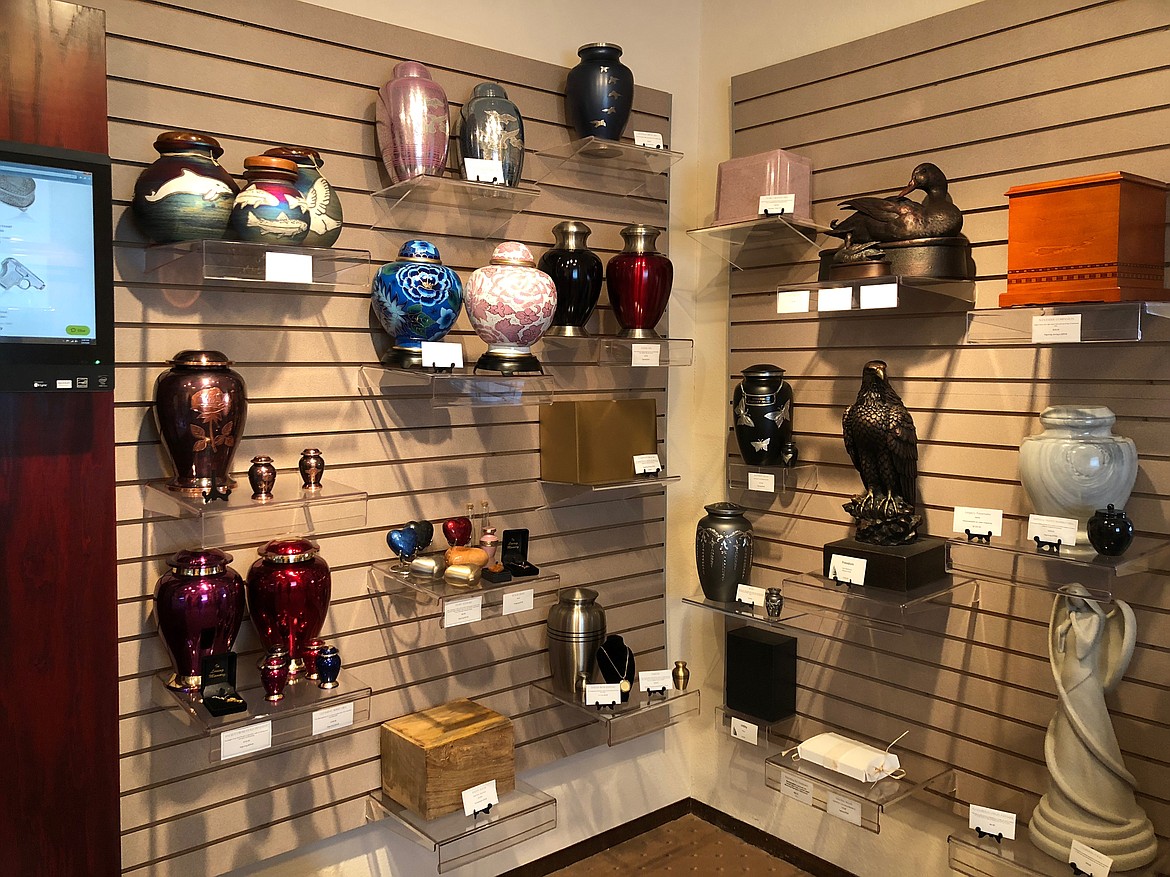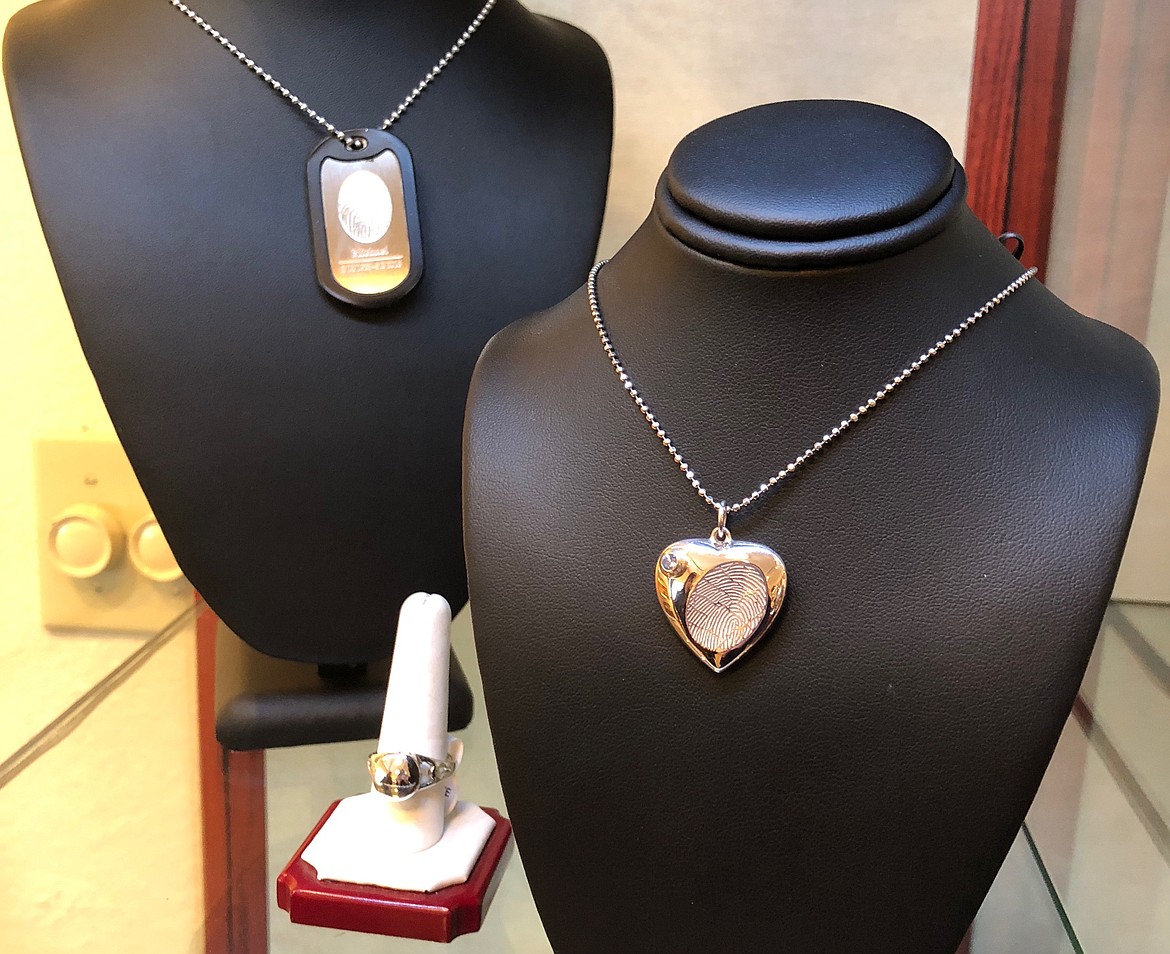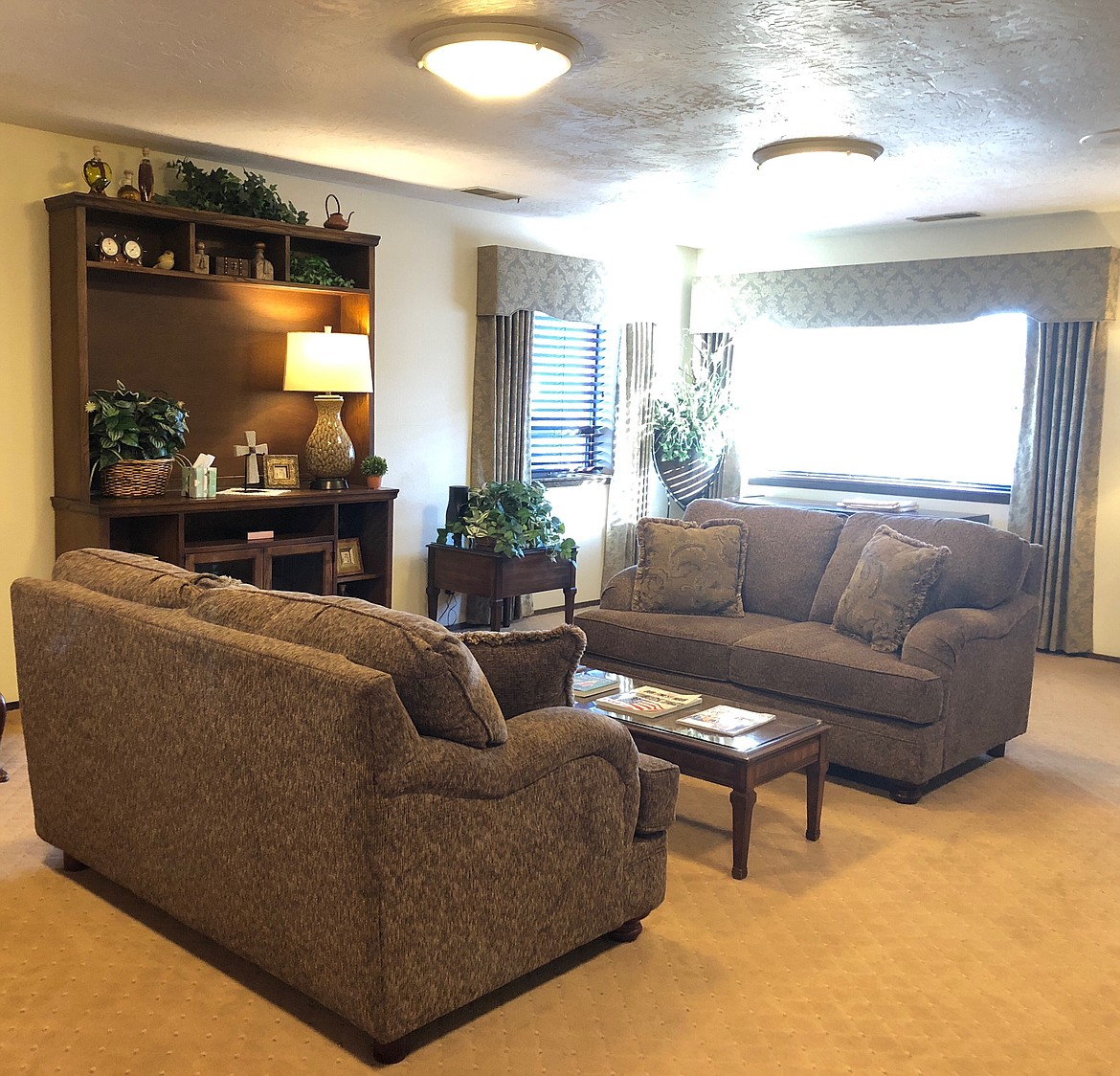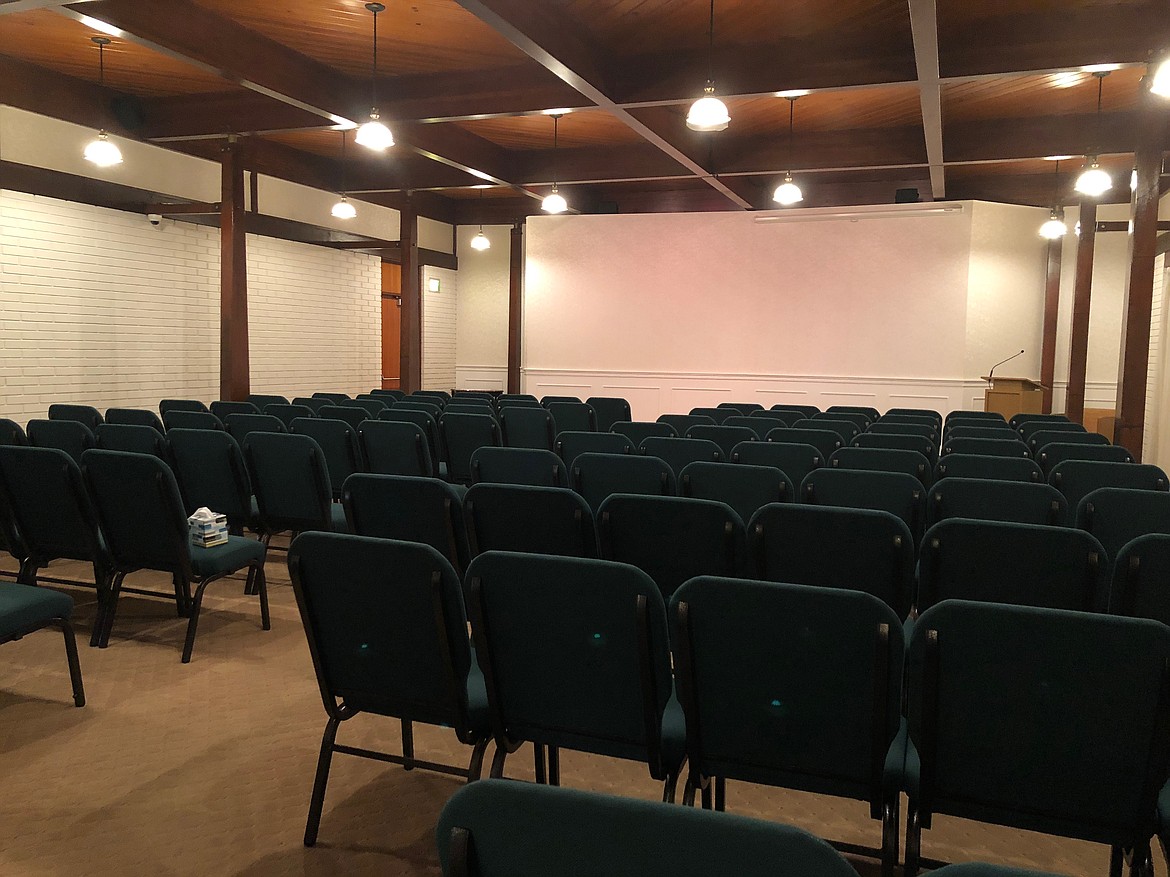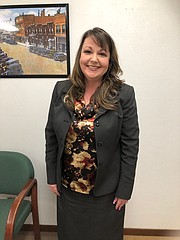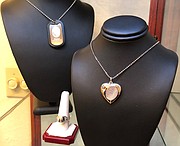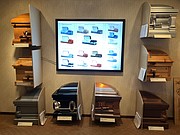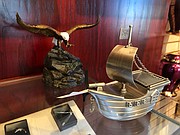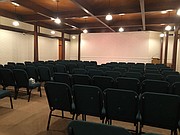Low profile, high impact: Morticians
A mortician’s work is among these few.
Licensed mortician Heather Sheffield at English Funeral Chapels & Crematory wouldn’t want you to think her work is all about death, however. Rather her role as a mortician – and therefore as a funeral director – means she is heavily involved with nurturing the living, helping them move forward and easing their time of grief.
“[As a mortician] you’re helping families to honor and have closure for a loved one that’s passed away,” Sheffield said.
But what exactly is a mortician?
Push your fiction morticians aside; chances are good they’re exaggeratedly macabre (sorry, Spellman family) or simply misinformed.
“There’s a stigma there,” said English Funeral Chapel intern Tony Ball, who’s studying to become a funeral director, “There’s a taboo almost.”
Although Ball and Sheffield agree that many lose their dark fascination, often after they’ve experienced the help of a funeral home themselves, it’s likely there are still some aspects of the job that are unfamiliar to many.
In Idaho, a licensed mortician is both a funeral director and an embalmer, Sheffield said. As funeral directors, they assist families with arranging services, seeing to their loved one’s remains, and making related decisions that come after a loved one’s passing. As embalmers, they assist in the temporary preservation of human remains.
Further separating themselves from their horror movie counterparts, real-life embalmers perform much gentler activities, all aimed at restoring loved ones’ appearances to their best days.
“This is when we’re washing their hair,” said Sheffield. A man’s face may be shaved. Using pictures, embalmers keep any makeup natural – or keep it consistent with what that loved one preferred.
“We’re doing everything to preserve and make them look as lovely as they used to be,” she said, “to get them back to how they would have looked [in life].”
Much of Sheffield’s work, however, appears focused on the living. Morticians and funeral directors (it’s possible to be licensed as just the latter) spend much of their day making arrangements for services and seeing to the remains of loved ones.
“One of the biggest things we do is we’re an event planner. We put together an event to celebrate someone’s life.” — Heather Sheffield, Mortician with English Funeral Chapels
After the fundamental question of burial or cremation – and cremation for burial, or for remaining with a loved one, or for scattering – even more decisions follow.
Whatever you choose, a container is necessary, even if it’s temporary. Then you have to decide size, decorative details – would your loved one like it, too?
Having a service? Think about who’s conducting it, if it’s formal. Will there be flowers, a slideshow, music, a reception to follow?
These decisions can be stressful at a time when families are grieving. Funeral directors can help families make the best decisions for their needs and carry out the necessary arrangements.
“You don’t know how to go through this hardship unless you have someone to help you,” said Ball.
“Every family, everyone’s so unique,” she said. “How we deal with a tragedy and how it affects us is so different.”
Because of this, Sheffield says it’s important for morticians to be mature, a little serious (families are not always ready for jokes), and a good listener. They should try to gauge a family’s needs, preferences and style from how these individuals are, to better assist them.
“In my years, the people that are the best at this, at helping families, are just very empathetic. They’re humble,” she said. “They’re just nice people. They’re kind.” — Heather Sheffield
“I think the hardest thing is the compartmentalizing,” Sheffield said, because morticians do care about the families they work with. Learning to “change the channel” instead is important, she adds.
“When we go home to our families, what we take home to our family is cherishing every day…we take the values with us.
On the flip side, Sheffield says getting to meet with families and show them the options available to them is meaningful to her. Options like special keepsakes are more numerous than they used to be. Finding the one that stands out for a grieving family is the best part of Sheffield’s job.
Loved one’s thumbprints can be taken and engraved onto jewelry or other keepsakes. Special necklaces with a compartment for a loved one’s remains – topped with their birthstone – are also available.
“I had a bunch of guys who had pocket knives with their dad’s thumbprint and a special thing he always said when he took the boys out hunting [engraved on it],” Sheffield said. “It was very meaningful.”
Ball agreed that while some days can be rough, the payoff is worth it.
“It’s a good feeling to have when things flow together,” he said.
“It’s an interesting work. I never knew how much work that went into this part of life.”
Funeral directors don’t necessarily have to assist the living after a loss.
Pre-arranging allows clients to make their own arrangements before they’re needed. When the time comes, loved ones can focus on finding that closure and honor Sheffield says is so important.
“It’s really a form of nesting. Everything is in order,” Sheffield said. “And your family is not going to have [that] stress…It’s going to be a much easier time.”
Sheffield estimates about 30 percent make prearrangements. Many are over 50 and thinking more seriously of retirement, although Sheffield says there’s no need to wait.
“If I had my way when a couple gets married and you’re putting things together…that would be the time [to make a pre-arrangement],” said Sheffield.
Pre-arrangement is a two-part process. The first is an information file, full of an individual’s decisions on burial/cremation, obituaries, services – what to include, how they’ll look, etc. The second part involves determining how everything will be paid for, which can also add stress for family members.
Pre-arrangements are also transferrable, meaning even if the plan is made with a local funeral home, it’s still useful if you move later. It’s something that can sit in a drawer and be revisited every 10 years, the funeral director added.
The advice is similar to that surrounding wills. Lawyers often advise making one early and revising it periodically.
Another piece of advice from the long-time funeral director? Don’t forgo a service just to save your loved ones “all that fuss.” Sheffield acknowledges that every family is unique and occasionally a service doesn’t fit that family’s needs, but she finds they are often valuable.
“Services are highly beneficial for families. It helps create honor and closure that they really need,” she said.
“Let them. They need that.”
Although many come into the profession later, seeking a second or perhaps third career, according to Sheffield, she is unusual to have found her calling early. Already enrolled at a nursing program at Cypress College in California, Sheffield says much of her coursework overlapped with the mortuary program’s requirements. After getting to know the funeral industry better, she made the switch.
“It was partly [that] I was interested in it – it’s very related to nursing,” said Sheffield. “It’s a combination of science, cosmetology, and a service to people.”
For Ball, the process was more of a homecoming. He worked for his family’s headstone business, Coeur d’Alene Monument and grew up familiar with the English family. Eric English, owner of English Funeral Chapels and mortician, approached Ball – who was then working at Costco – about coming to the funeral business.
“He brought me back into the industry, so to speak.”
Ball is somewhat unusual himself though, as many mortuary schools are graduating more women than men.
The typical education for a mortician involves two years of coursework in a mortuary school, coupled with at least two years of experience as an intern or apprentice, although it may vary in other states. To be licensed in another state, morticians and funeral directors can typically take a mortuary law exam for that state, assuming they’ve worked for a few years already.
Ball is in the middle of that process. After taking some courses at North Idaho College, he is completing his coursework online from Arapahoe Community College in Colorado, although he will have to fly in for labs a couple times a year, as he interns with English Funeral Chapels.
It is lucky for Ball he found the online program, as the closest programs to Kootenai County appear to be in Spokane and Seattle; the only Gem State programs are in metropolitan areas in southern Idaho.
As an intern, he helps handle obituaries, assists funeral directors with ordering and making arrangements, and even helps bring loved ones into their care.
“You can’t just be a frail little person doing this job. You have to be creative, because you have to be dignified.” Tony Ball, intern.
“There’s so many eyes on us.”
In all, the field is sitting well for veteran-mortician Sheffield and private-intern Ball.
“Since 2007, I’ve worked in the Northwest. I’ve been at English Funeral for the last three years,” said Sheffield. “And I love it here…in my 20 years this has been the best place.”



